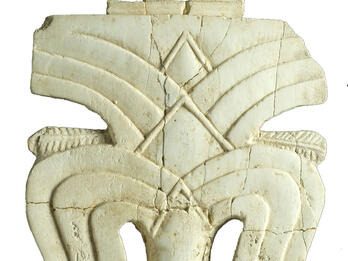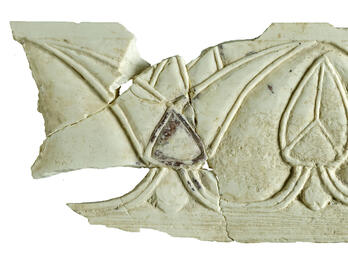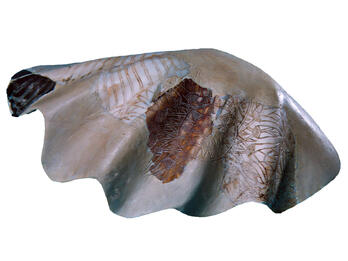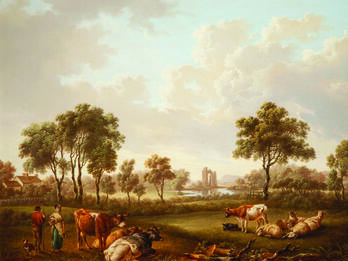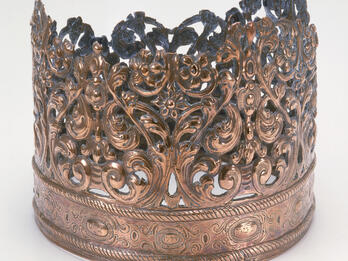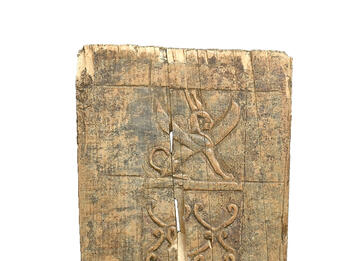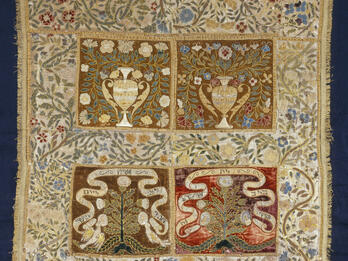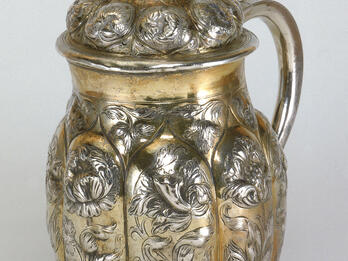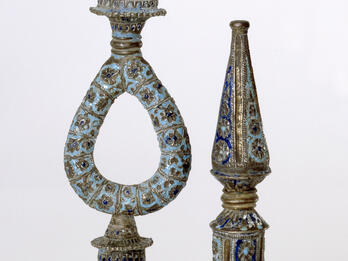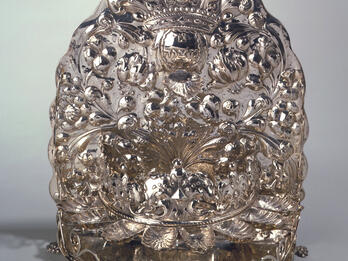Showing Results 1 - 10 of 23
Restricted
Image
This and the next several ivories come from the approximately twelve thousand ivory pieces and fragments that were found in the royal compound in the city of Samaria, capital of the Northern Kingdom…
Places:
Samaria, Land of Israel (Samaria, Israel)
Date:
Iron Age IIA–IIB, 9th–8th Century BCE
Subjects:
Categories:
Restricted
Image
The lotus image on this ivory from Samaria was originally an Egyptian symbol of the life-giving power of the god Ra—experienced through the fragrance of the flower—and of the afterlife.
Places:
Samaria, Land of Israel (Samaria, Israel)
Date:
Iron Age IIA–IIB, 9th–8th Century BCE
Subjects:
Categories:
Restricted
Image
Engraved tridacna (clam) shells like this one from Arad seem to have been used as cosmetic containers in the Near East and Mediterranean worlds in the late seventh and early sixth centuries BCE. This…
Places:
Arad, Land of Israel (Tel ‘Arad, Israel)
Date:
Iron Age IIC, Second Half of 7th–Early 6th Century BCE
Subjects:
Categories:
Restricted
Image
This pastoral painting is typical of the work of Charles Towne. His landscapes were not realistic depictions of actual places, but instead romantic views of idealized scenes. He cited seventeenth…
Contributor:
Charles Towne
Places:
Merseyside, United Kingdom
Date:
1812
Subjects:
Categories:
Public Access
Image
This copper Torah crown was made in Bolzano, Italy. An excellent repoussé piece, its delicate pierced and traced decorations are adorned with floral arrangements of leaves and vines. The shape of this…
Contributor:
Artist Unknown
Places:
Bolzano, Holy Roman Empire (Bolzano, Italy)
Date:
1698/9
Subjects:
Categories:
Restricted
Image
The top register of this plaque from Hazor depicts a crouching winged sphinx wearing the double crown of Upper and Lower Egypt. The lower register shows two stylized three-tiered palmettes. The…
Places:
Hazor, Land of Israel (Tel Hazor, Israel)
Date:
Iron Age IIB, first half of 8th century BCE
Subjects:
Categories:
Public Access
Image
This intricately decorated textile, possibly used as a Torah cover, was produced in Prague around 1600. Four squares adorn its center, the top two containing vases ringed by flowers and vines and the…
Contributor:
Artist Unknown
Places:
Prague, Holy Roman Empire (Prague, Czech Republic)
Date:
ca. 1600
Subjects:
Categories:
Public Access
Image
This pitcher from Nuremberg, Germany, was made around 1650. Cast in silver, the repoussé piece is finely traced and engraved with floral patterns. On its lid sits a shield engraved with a Hebrew…
Contributor:
Artist Unknown
Places:
Free Imperial City of Nuremberg, Holy Roman Empire (Nuremberg, Germany)
Date:
ca. 1650|1732
Subjects:
Categories:
Restricted
Image
These small Torah finials, decorated with silver repoussé and dark and light blue enamel, originated in Persia. They are further adorned with slender flowers and graceful geometric patterns.
Contributor:
Artist Unknown
Places:
Ottoman Empire (Iran)
Date:
18th Century
Subjects:
Categories:
Public Access
Image
This silver Hanukkah lamp, made in Amsterdam by the master silversmith Pieter van Hoven, sits on six claw legs and is decorated with intricate leaf and floral patterns. Its front side is further…
Contributor:
Pieter van Hoven
Places:
Amsterdam, Dutch Republic (Amsterdam, Netherlands)
Date:
1705


